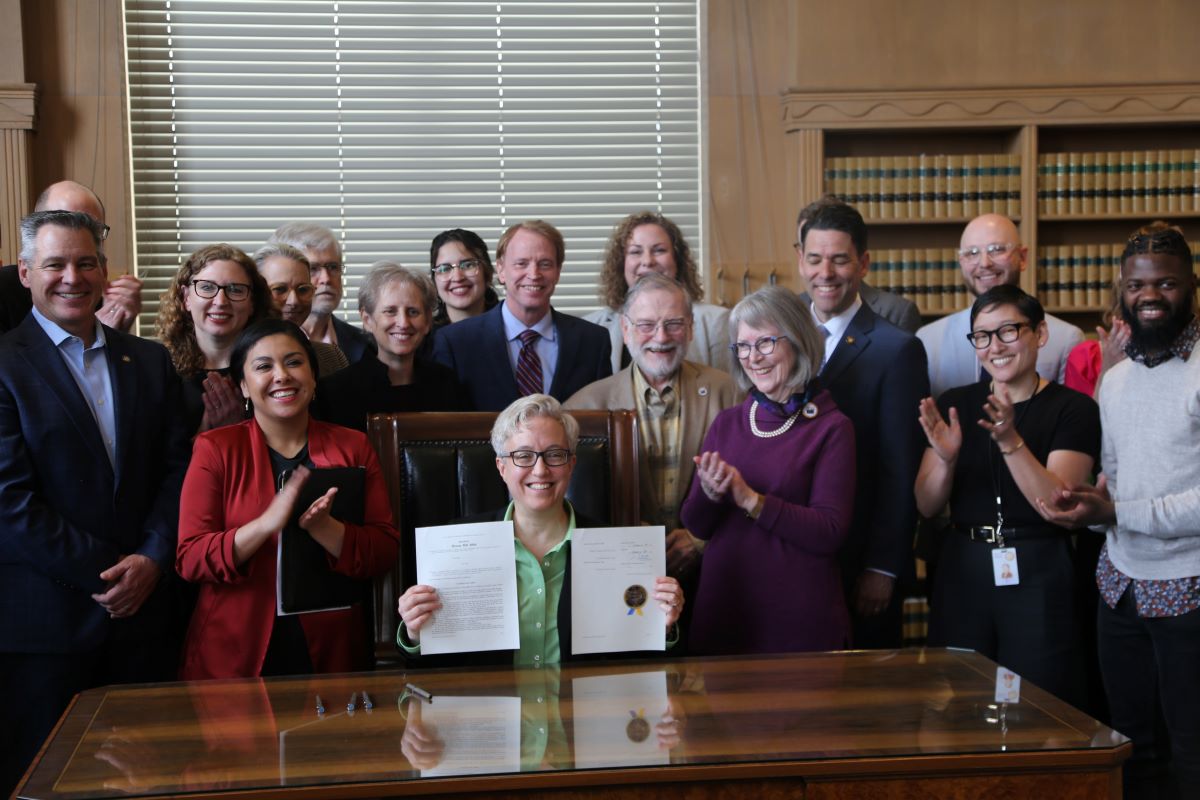Regional tribes celebrate lamprey with event at Willamette Falls
Published 7:27 pm Thursday, June 26, 2025
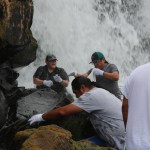
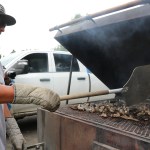
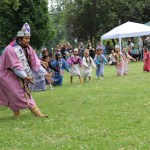
While water pours down the face of Willamette Falls behind her, Dave’y Lumley slips into a chest-deep pool surrounded by rocks and boulders. Within a minute she’s holding a foot-and-half long writhing boneless fish — a Pacific lamprey.
Within the next 45 minutes, Lumley and fellow Yakama Nation fishers Shane Lloyd and Stephon Phillips have collected nearly 300 of the slick and slimy suckers ahead of the 2025 Yakama Nation Lamprey Festival.
Members of the Yakama and other tribes of the Columbia River Inter-Tribal Fish Commission — Warm Springs, Umatilla and Nez Perce — along with community members and representatives from the Metro regional government, Bonneville Power Association and U.S. Department of Fish and Wildlife gathered at Clackemette Park in Oregon City Thursday, June 26, to learn about, celebrate and eat lamprey gathered by Lumley and other tribal fishers, as well as salmon. Yakama hosts the gathering, known as the Willamette Falls Lamprey Festival, each year.

Yakama Nation fishers harvest lamprey from Willamette Falls. (Staff photo: Holly Bartholomew)
While the festival provides a good reason for members of these tribal communities to gather together, celebrate and eat two of their most cherished first foods — salmon and lamprey — it’s also the perfect opportunity to educate the broader community about the lesser known of the two fish.
Aldwin Keo of the Warm Springs explained that compared to salmon, a food desirable to many non-tribal people, the lamprey is quite unpopular, with many people seeing it as a nuisance, if they’re even aware of its existence.
“Lamprey doesn’t have that same value,” said Keo, who began working on lamprey restoration efforts in 2023. “But we recognize it as our first relative. They came before salmon, that’s why they’re important to us, but a lot of people don’t see it that way. That’s why we’re like the voice for them.”
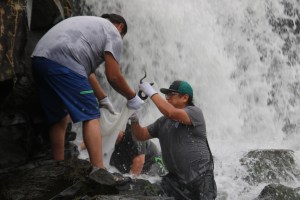
Yakama Nation fishers gather lamprey at Willamette Falls June 26 ahead of the lamprey celebration. (Staff photo: Holly Bartholomew)
Broader recognition of the lamprey is slowly starting to grow thanks to efforts like the Pacific Lamprey Restoration Plan and events like the lamprey celebration.
That recognition is key as the tribes work to restore lamprey populations on the Columbia River and its tributaries.
Though there are no official counts of lamprey population prior to the dams going in, the Columbia River Inter-Tribal Fish Commission estimates that millions previously lived in the Columbia and throughout the basin. When scientists began counting lamprey passage at Bonneville in the mid-20th century, the population was recorded at 400,000. Today it’s just 20,000. The same phenomenon was observed at other dams throughout the basin.
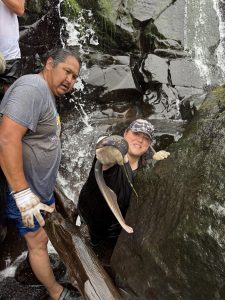
Yakama Nation fisher Dave’y Lumey shows off a lamprey pulled from the waters below Willamette Falls. (Staff photo: Holly Bartholomew)
However, tribal efforts to restore lamprey to the region’s rivers and streams, which began in the early 2000s, are taking effect. In 2011, the tribes of the Columbia River Inter-Tribal Fish Commission published the Tribal Pacific Lamprey Restoration Plan based on two decades of research and years more of oral histories from elder tribal fishers. The plan has helped guide tribal, state and federal efforts to restore lamprey populations. The tribes released an updated version of the plan earlier this spring.
Translocation — or the moving of lamprey from dams like Bonneville to spawning areas upriver —is a key to the plan and one of the biggest drivers of restoration success. (Half of the fish harvested at Willamette Falls the day prior to the festival, 98, were translocated to parts of the Willamette River and tributary streams that haven’t seen lamprey in over 70 years.)
Keo is also studying the effectiveness of lamprey passage systems at dams throughout the region, which also appear to be helping restore lamprey numbers in the decade or so since they’ve been installed.
In 2023, scientists at Bonneville Dam noted that lamprey passage was 170% higher for that year than the average for the previous 10 years.








